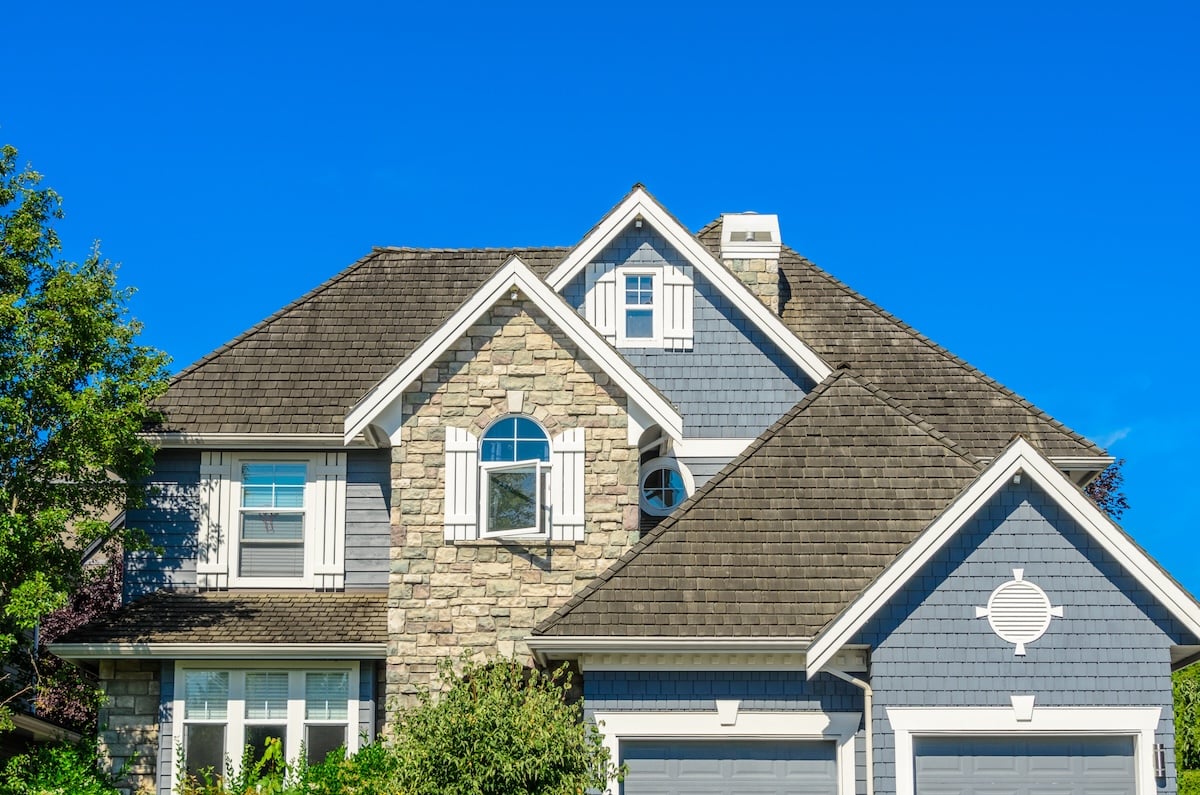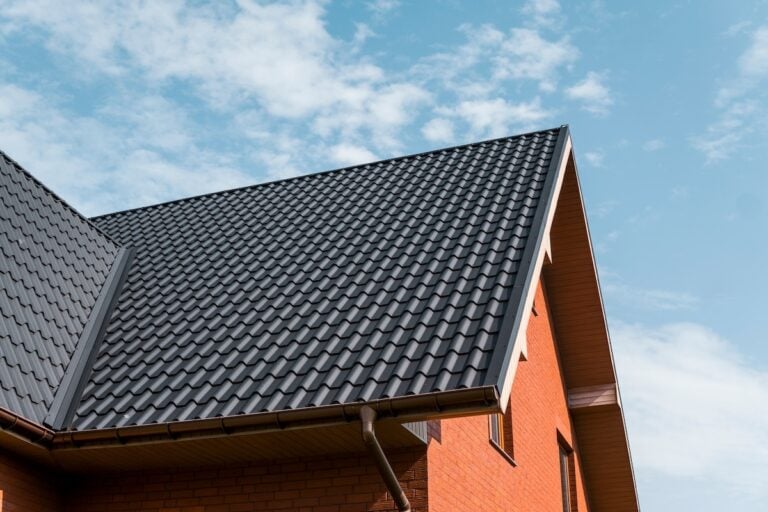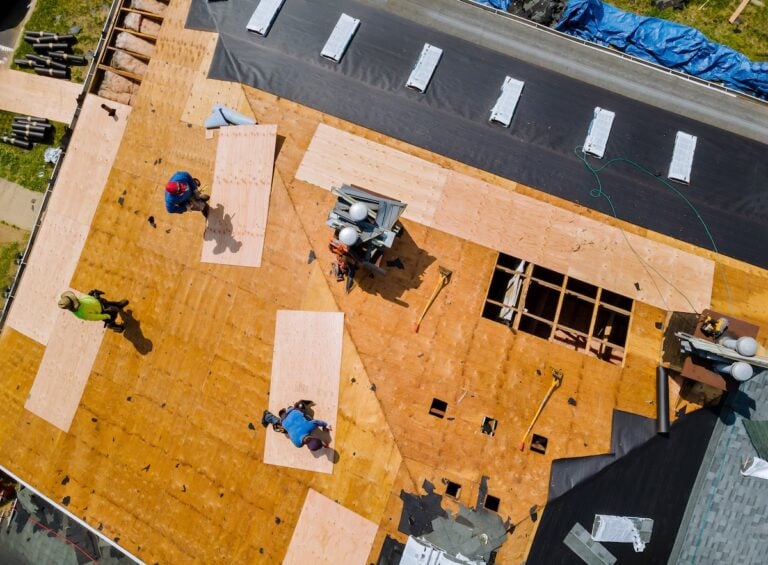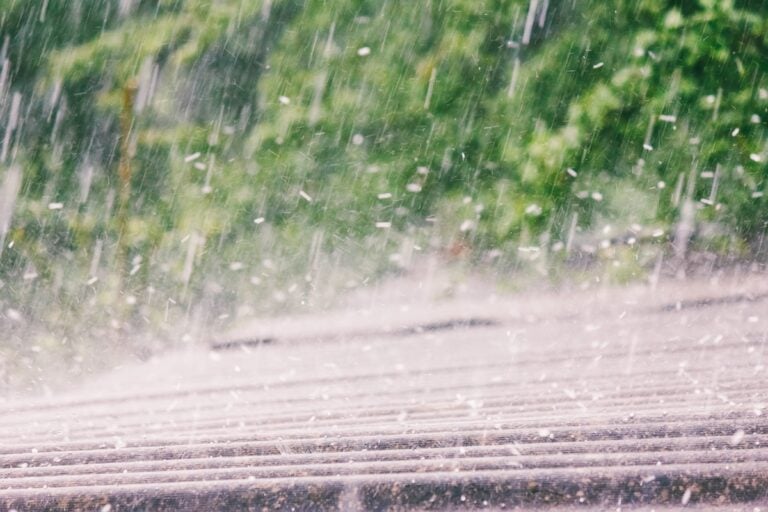Choosing the right siding for your home is one of the most important decisions you’ll make as a homeowner. Your siding protects your house from weather, insects, and other elements while defining your home’s curb appeal for years to come. With so many types of siding available, it can feel overwhelming to know which option will work best for your specific needs and budget.
This comprehensive guide will walk you through the most popular siding materials, their benefits and drawbacks, and key factors to consider when making your selection. By the end, you’ll have the knowledge needed to make an informed decision that you’ll be happy with for decades.
Here’s what we’ll cover:
- How to choose the best siding for your home
- Popular types of siding materials and their characteristics
- Cost considerations for each siding type
- Maintenance requirements you should know about
👉 How To Choose The Best Siding For Your Home

Selecting the right siding involves considering several important factors beyond just appearance and cost.
- Climate Considerations: Local weather patterns are key to siding selection. Homes in areas with extreme temperature changes benefit from materials like vinyl or fiber cement that expand and contract well. Coastal areas with salt air may need corrosion-resistant materials like vinyl or treated wood.
- Home Style and Architecture: Choose siding materials that complement your home’s architectural style. Traditional homes often suit wood or fiber cement siding. Modern designs pair well with sleek metal or fiber cement options.
- Local Building Codes: Check local building codes and homeowner association rules. Some areas restrict certain materials or require specific fire ratings.
- Personal Lifestyle: Decide how much time and effort you want to spend on maintenance. Vinyl or aluminum siding is ideal for a low-maintenance solution. Wood siding offers natural beauty for those who enjoy maintenance projects.
- Long-Term Plans: If selling your home soon, choose materials with broad appeal and good ROI. For long-term stays, prioritize personal preferences and durable materials.
🔎 7 Popular Types Of Siding Materials

Choosing the right siding material is essential for protecting your home from the elements and enhancing its curb appeal. With so many options available, understanding their benefits can help you make the best decision for durability, style, and budget.
1. Vinyl Siding
Vinyl siding continues to be the top choice for American homeowners because of its combination of affordability, versatility, and low maintenance requirements. This synthetic material is designed to replicate the appearance of more expensive materials, such as wood or stone, and comes in a wide range of colors and textures to suit any aesthetic preference. It’s easy to clean, requiring only soap and water, and is resistant to rot and insect damage, making it a practical option for long-term use. However, vinyl does have its limitations. In extremely cold temperatures, the material can become brittle and crack. Over time, exposure to sunlight may also cause the color to fade. While vinyl is generally affordable, it’s not as durable as some other options and can be challenging to repair when individual sections are damaged.
2. Fiber Cement Siding
Fiber cement siding is a modern, durable option made from a blend of wood fibers, cement, and sand. This material has gained popularity in recent years because it combines the visual appeal of wood grain with superior durability. Unlike natural wood, fiber cement is resistant to insects, rot, and fire, making it a safer and longer-lasting option for homeowners. It can be painted in virtually any color, allowing for customization to fit your home’s design. However, fiber cement siding comes with a higher upfront cost compared to vinyl and requires regular maintenance, such as periodic repainting, to retain its appearance. Additionally, the material’s weight makes it more difficult to install, often necessitating professional assistance. If not installed correctly, it can become brittle and susceptible to damage.
3. Wood Siding
Wood siding is a classic option that offers natural beauty and timeless charm. Popular wood choices for siding include cedar, pine, and redwood, each with its own unique look and characteristics. Homeowners often select wood siding for its authentic appearance and the ability to stain or paint it in any color to match their personal style. Wood is also an environmentally friendly choice and can increase a home’s value when properly maintained. However, it requires significant upkeep, including regular maintenance and treatments, to protect it from insects, rot, and moisture damage. Wood siding typically has a higher cost than vinyl, and in areas prone to wildfires, it presents a greater fire risk. Additionally, periodic refinishing is necessary to maintain the siding’s appearance and functionality over time.
4. Aluminum Siding
Aluminum siding, once a widely used material for homes, remains a solid choice for specific situations due to its lightweight and durable properties. This metal siding resists fire, requires minimal maintenance, and is recyclable, making it an environmentally friendly option. When properly coated, aluminum siding is resistant to rust as well. Despite these advantages, aluminum siding has its drawbacks. It can dent easily, and scratches or other surface damage may be more visible compared to other materials. Its color options are more limited, and some styles may appear outdated or less modern, which could impact the overall aesthetic of your home. Additionally, aluminum siding can be noisy during rainstorms or hail, which may be a concern for some homeowners.
5. Steel Siding
Steel siding offers exceptional durability and is particularly well-suited for homes in areas with harsh weather conditions. Known for its strength, it resists impacts, fire, insects, and rot, making it a reliable choice for long-term protection. This material requires little maintenance and has an impressive lifespan, further enhancing its value. However, steel siding does come with a higher cost compared to many alternatives and may require professional installation due to its weight. If the protective coating on steel is damaged, it can rust over time, compromising its durability. The design options for steel siding are somewhat limited, which may make it less appealing for homeowners seeking a more customized look. Like aluminum, steel siding can also be noisy during storms, which might be a consideration for some.
6. Brick Siding
Brick siding is a premium choice that offers unmatched durability and a timeless, classic appeal. Unlike structural brick walls, brick siding is typically a thin veneer applied over an existing wall, providing the same aesthetic without the need for full brick construction. Brick siding is long-lasting, with excellent insulation properties that help regulate indoor temperatures. It requires minimal maintenance and is fire-resistant, making it a safe and practical choice. However, brick siding comes with a high upfront cost and requires skilled installation to ensure it is properly applied. Its heavy weight may necessitate structural support, adding to the expense. Brick siding is available in limited color options, and any repairs or modifications can be costly and complex.
7. Stone Siding
Stone siding is the epitome of luxury and durability, offering a unique, natural appearance that adds significant value to any home. Like brick siding, it is typically applied as a veneer over existing walls, providing the look of solid stone construction without the extreme cost or weight. Stone siding is virtually maintenance-free and provides excellent insulation, making it an energy-efficient option. Its durability ensures it can withstand the test of time, even in harsh weather conditions. However, stone siding is one of the most expensive options available and requires expert installation due to its heavy weight and structural demands. It may be difficult to find in certain areas, and repairs or modifications can be both challenging and costly. Despite these drawbacks, stone siding remains a popular choice for homeowners seeking a high-end, distinctive aesthetic.
💵 Cost Considerations For Each Siding Type

Understanding the financial investment required for different types of siding helps you make a decision that fits your budget both now and in the future.
Budget-Friendly Options:
Vinyl siding typically offers the lowest upfront cost, ranging from $3 to $8 per square foot installed. Aluminum siding falls into a similar price range, making these materials attractive for cost-conscious homeowners.
Mid-Range Choices:
Fiber cement and wood siding generally cost between $6 to $15 per square foot installed. While more expensive initially, these materials often provide better long-term value through durability and appearance.
Premium Materials:
Brick and stone siding represent the highest investment, often costing $15 to $30 per square foot or more. However, these materials can last for generations and significantly increase your home’s value.
🛠️ Maintenance Requirements You Should Know About
Different siding materials require varying levels of ongoing care to maintain their appearance and protective qualities.
Low-Maintenance Options:
Vinyl, aluminum, and steel siding require minimal ongoing maintenance. Regular cleaning with soap and water keeps these materials looking their best. Occasional inspection for damage and prompt repairs help ensure long-term performance.
Moderate Maintenance Needs:
Fiber cement siding needs repainting every 10-15 years to maintain its appearance and protection. Regular cleaning and inspection help identify any issues early.
Higher Maintenance Requirements:
Wood siding requires the most ongoing attention. Depending on your climate and wood type, you may need to restain or repaint every 3-7 years. Regular inspection for rot, insects, and other damage is essential.
Virtually Maintenance-Free:
Brick and stone siding require very little ongoing maintenance beyond occasional cleaning and mortar joint inspection.
👨🔧 Trust The Experts At Roof Troopers For Your Siding Needs
At Roof Troopers, we know that choosing the right siding for your home is a big decision, and we’re here to make the process simple and stress-free. With years of experience, personalized guidance, and expert installation, our team is dedicated to helping you find the perfect siding solution to match your home’s unique needs and style.
When you work with Roof Troopers, you can trust that your home is in the hands of skilled professionals committed to quality, durability, and your satisfaction. Ready to get started? Contact us today for a free consultation and estimate, and let us help you protect and enhance your home for years to come.
Don’t pay for your roof until 2027!
0% APR, same as cash for 24 months
Get Started Today!
"*" indicates required fields








